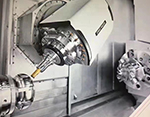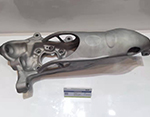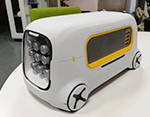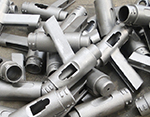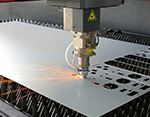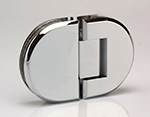What are the basics of CNC milling and turning?
CNC milling and turning are the two most common CNC machining processes. CNC milling involves the use of rotating tools to remove material from the workpiece. CNC turning, on the other hand, uses a non-rotating tool to shape the workpiece. Both milling and turning can be performed on a variety of materials, including metals, plastics and composites. In general, CNC milling is better suited for creating flat surfaces, while CNC turning is better suited for creating cylindrical shapes. However, both processes can be used to create a wide variety of shapes and geometries.
How do CNC turning and milling machines work?
CNC lathes and milling machines are computer-controlled tools used to create precise, complex parts for a variety of industries. These machines work by using rotary cutting tools to remove material from the workpiece. Turning processes are used to create cylindrical parts, while milling processes are used to create flat or irregularly shaped surfaces. Both processes can be performed on a variety of materials, including metals, plastics and composites.
Turning and milling machines combine the functions of a lathe and a milling machine. These machines are often used to produce small, complex parts, such as those used in the electronics or medical industries.
To make a part, lathes and mills first start with a piece of material called a workpiece. The machines then use a variety of tools to remove the material from the workpiece and shape it into the desired shape. The turning process involves rotating the workpiece while using cutting tools to remove the material. The milling process, on the other hand, involves moving the workpiece past the rotating tool. These two processes can be performed simultaneously on both lathes and milling machines, resulting in increased efficiency and precision.
Their ability to produce extremely precise parts makes them a must-have tool for many manufacturing industries. In addition to being more accurate than manual turning and milling methods, CNC machines can produce parts faster and with less waste. As a result, CNC lathes and milling machines have become an important part of the global manufacturing business.
What industries use CNC machines for milling and turning?
CNC lathes and milling machines are used in a variety of industries to make precision parts. Automotive, aerospace and medical manufacturers use CNC machines to make engine parts, drive shafts and surgical instruments.
For example, aerospace companies use CNC machines to make parts for aircraft and satellites. Automotive companies use CNC machines to make parts for cars and trucks. Medical companies use CNC machines to make implants and prosthetics. In the electronics industry, CNC machines are used to produce circuit boards and other components.
CNC Finishing Process
Finishing the surface of a part is the final step required in the CNC machining process. Finishing is used to eliminate defects, increase resistance and strength, improve part appearance, and more. Here are some common surface finishes for CNC machined parts.
Sandblasting: The sandblasting process adds a satin or matte finish to CNC parts. Matte finishes are accomplished by spraying glass beads on the part using a pressurized air gun.
Powder Coating: Parts are powder coated with a thin protective layer that adds strength and wear resistance. In the powder coating process, the part is first primed with a chromate or phosphate coating. Next, the part receives a dry powder coating from an electrostatic gun. Finally, the part is cured in an oven.
Anodizing: CNC parts are anodized to form an oxide layer that increases their density, thickness and durability. Anodizing also makes the part non-conductive. During the anodizing process, the part is placed in an acidic electrolyte bath used as an anode. A cathode is added to the part and current is passed through the acid. Oxygen ions in the electrolyte and atoms in the alloy bond along the surface of the part.
Surface grinding: The surface grinding process is used when specific dimensions or a precise finish is required. Surface grinding removes material by using a high-speed grinding wheel as a cutting tool.
Polishing: Polishing techniques improve the size and accuracy of a part while producing a mirror finish. Polishing tools and abrasive materials are used to obtain a smooth surface.
Passivation: The corrosion resistance of CNC machined parts is improved when the passivation process is completed. Passivation can include spraying, cycling in chemical solutions, gel application or tank dipping.
Chemfilm: Chemfilm finishes are chemical conversion coatings that increase the corrosion resistance of aluminum substrates and serve as a base for organic coatings. Parts are impregnated, brushed or sprayed with a chemical film layer.
Vacuum Metallization: The vacuum metallization process produces a mirror or decorative uniform finish, while also improving the barrier properties to heat, air, light or water. In the vacuum metallization process, the part is placed in an enclosed chamber where metal vapor adheres to and covers the part.
Screen Printing: Screen printing is used to transfer designs or logos onto the part. When a part is screen printed, a grid is used to apply the ink to the surface, but only to the permeable areas not covered by the blocking stencil.
Plating: Plating increases the corrosion and wear resistance, electrical conductivity and reflectivity of the part. During the plating process, the part is immersed in an electrolyte bath containing the material that will be used to coat the metal. The electrical charge causes the material to transfer to the part, resulting in a uniform metallic coating.
Tumbling: Tumbling or ultrasonic polishing removes any sharp points or edges from the machined part. During the tumbling process, the part is placed in a bucket with media, water and cleaner. The barrel is tumbled at different speeds depending on the desired finish.
Painting: Painting can be used to add color, varnish or ink to the part. Painting methods may include spraying using equipment to paint parts.
As-Milled: As-milled or as-machined products do not require secondary processing. They will still have visible imperfections and may have a rough surface.
CNC Turned Parts
A variety of parts can be used using CNC turned manufacturing methods, including
Valve stems
Valve bodies
Gaskets
Shaft
Shanks
Pivot rod
Nozzle
Pins
Housing
Handle
Drive Shaft
Bolt
Pins
Fasteners
CNC milled parts
Many parts can be manufactured using CNC milling methods, including
Mold cavities
Mold holders
Valves
Engine houses
Bone folding plates
Shaft
Reflector
Adapters
Furniture
Medical parts


